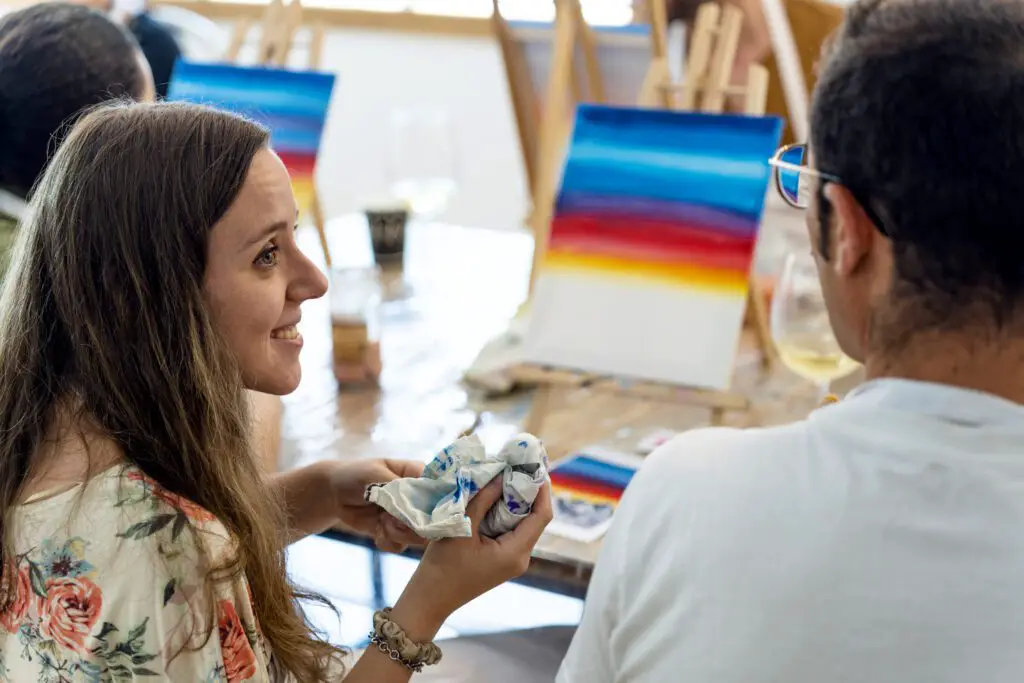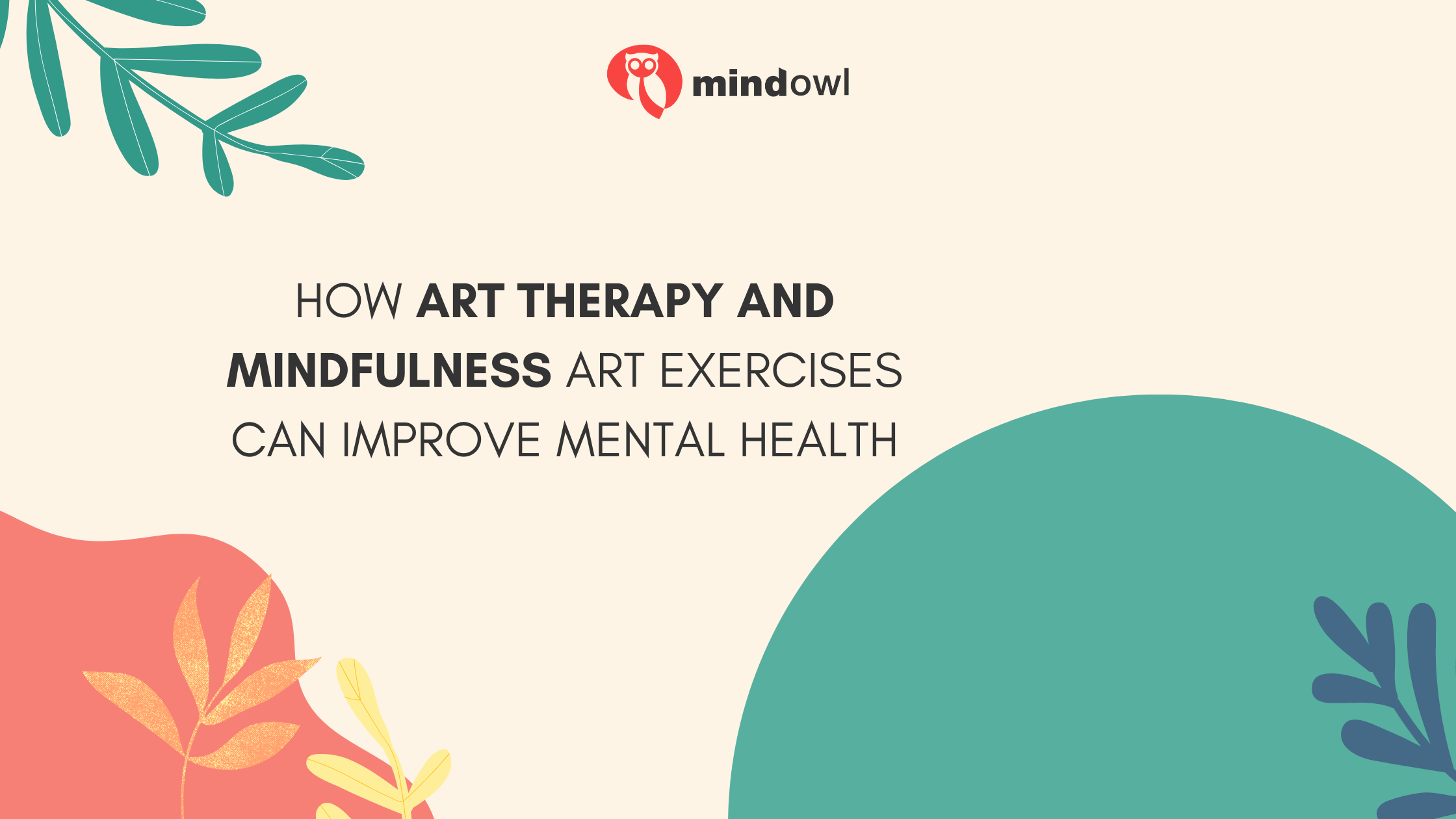This post was developed via a partnership with BetterHelp.
Have you ever started doodling without even thinking about it? After a little bit of doodling in the margins of your piece of paper, you can return to the subject at hand. Without even trying, you may have started to feel a little bit calmer and more clear-headed after a quick doodle or sketch. Engaging in doodling, sketching, and other kinds of arts and crafts can be an effective form of mindfulness.
While sketching and doodling may be a helpful way for someone to clear their mind, art therapy can be practised with a licensed therapist. Practising art therapy can bring about benefits for several mental health conditions, including depression, anxiety, substance use disorders, eating disorders, and overall mental well-being. Art therapy can also work as a complementary therapy to other forms of mental health treatment.
To learn more about how art therapy can work to improve mental health, visit BetterHelp’s guide to art therapy:
https://www.betterhelp.com/advice/therapy/what-is-art-therapy-and-how-can-i-get-started/
How Art Therapy Works To Improve Mental Health
Art therapy is a versatile and widely effective form of mental health therapy that involves the process of making art and how that can help someone to become more in touch with their emotions.
Art therapy has a wide range of benefits and ways that it can be practiced. Yet there are a number of misunderstandings surrounding the practice of art therapy. Let’s talk a little bit more here about what art therapy is and isn’t.

Art Therapy Doesn’t Require Being A Skilled Artist
First of all, art therapy isn’t a mental health modality designed for artists. In fact, art therapy isn’t really concerned with what the image looks like that a person seeking treatment has created during their session. Art therapy is about the process a person goes through while making art.
Whether the drawing is random scribbles or blobs of paint, it’s all part of the process of helping a person to access more of the emotions they feel and beliefs they hold. Art therapy is not meant to result in a painting that is hung in a museum.
Art Therapy Can Be An Effective Diagnostic Tool
Art therapy has also been shown to be an effective diagnostic tool. By helping patients to become more expressive in their emotions, art therapy can lead to breakthroughs for some patients who are left with unexpressed feelings in talk therapy.
Once a therapist has this additional information gained during art therapy, the therapist may be able to more effectively diagnose a person and tailor a treatment plan for them. Art therapy has been studied and shown to be effective in aiding the treatment of schizophrenia, depression and anxiety disorders, cognitive impairments and dementias, including Alzheimer’s disease, and those on the autism spectrum.
Finally, it’s important to remember that not all expressive art is art therapy. There is a difference between mindfulness art practices and engaging in art therapy with a licensed therapist.
What To Expect During An Art Therapy Session
All art therapy sessions will differ according to the therapist leading the session. But certain parts are often part of an art therapy session. The process may begin with the art therapist connecting the person being treated with materials. This could mean setting a person up for finger painting or giving them crayons to draw with. Each art therapist will have their own preferences for tools and setups, and they will work with your preferences for certain materials – whether that’s clay, paint or collage.
While the person is drawing or creating art, often a therapist will ask open-ended questions about their work. The therapist may delve into what something a person has drawn or painted means to them without making them feel like there’s a right or wrong answer. All therapy designed to address mental illness should feel nonjudgmental, art therapy is no exception.
At no point is it the therapist’s job to judge the quality or aesthetics of the art created during the session. This is a therapy session, not an art critique. It’s also not a therapist’s place to judge someone’s emotions or make them feel unsafe.
In this way, an art therapy session works in similar ways to a talk therapy session. And with any type of therapy, be sure that you’re receiving treatment with a licensed therapist. An art therapist should be a licensed therapist.
Art Therapy Is A Complementary Mental Health Treatment
Art therapy has also been shown in studies to work as a complementary treatment for mental illnesses. So even if someone is already engaged in talk therapy, for example, art therapy can be used in conjunction with the talk therapy. Different people respond to different kinds of therapies, and that’s natural. Art therapy may be able to provide a valuable addition to a person’s existing course of treatment.
There are also ways to use art as a mindfulness practice at home, which may be outside of treatment with an art therapist, or in addition to art therapy treatment.
Mindful Art Exercises You Can Do On Your Own
There are many ways to practice mindfulness art exercises on your own. There’s no wrong kind of craft to choose, even doodling can be a form of mindfulness. Just choose some type of art practice that appeals to you, and stay curious about experimenting with different kinds of art-making materials. To get you started, here are a few ways to start practicing mindful art exercises.
Draw Your Breathing Exercise
This mindfulness exercise involves drawing your breathing pattern. All you need is a piece of paper and a drawing instrument like a pencil, pen, crayon, or marker – and your breath.
Get in a comfortable seated position with your pencil and paper. Then start to focus on your breath. On the inhale, move your pencil in an upwards motion. As you pause before exhaling, move your drawing instrument vertically. Then as you exhale, move your pen in a downward motion until you begin to take your next breath. The end result may look something like a machine that monitors your breathing in a hospital, yet the process can be a valuable tool in connecting to your breath in the moment.
Drawing To Music
In this art mindfulness exercise, you can let the music guide your image making. Drawing to music can help some people get their creative juices flowing. They can follow the sounds of a musical piece with the stroke of their brush or flow of their pencil. There’s no right kind of music to use, but instrumental music – such as classical music or jazz – can provide a less distracting background.
Painting Your Emotions Exercise
What colour is anger? Does it have hard edges or does it flow out almost out of control? In the painting your emotions exercise, you choose an emotion you’re experiencing. Then you choose the way you paint that emotion. As you focus on how you can express an emotion visually, you may find yourself finding new ways to think about an emotion and the ways it may affect you.
Alternately, you don’t have to use paint. Although some people enjoy the expressive feel of paint moving around a canvas or piece of paper, coloured pencils, crayons, or any kind of mark-making materials can be used to portray your emotions through art.
Adult Coloring Books
Adult coloring books have been associated with improvements in overall mindfulness and many mental health benefits. People who colour have been shown to experience improved sleep, better focus, and decreased anxiety. In studies of adult colouring books, more complex designs like mandalas were shown to offer more mental health benefits over simpler patterns. So consider opting for colouring books with more complicated designs.
Drip Paintings As A Mindfulness Art Practice
Dripping paint onto a piece of paper or canvas can be a relaxing form of mindfulness that allows you to escape into the sensation of simply watching paint drip. Drip painting can be a helpful format for people who may feel self-conscious about their lack of painting skills. There’s no right or wrong way to drip. It’s all about the expression and observing your feelings during the process of creating a drip painting.
Finger Painting
There’s a reason why many people finger paint as kids – it’s a fun and easy art practice that provides a sensory experience with the paint squishing through your fingers. It’s also a good fit for people who don’t have a lot of art tools, like paintbrushes. Just grab some non-toxic paint, and get in there. Finger painting can be an engrossing mindful art practice that sweeps you away from your cares for a short time and a whole lot of fun.
In Conclusion
Art therapy can offer valuable mental health benefits when practised with a therapist. Art therapy can also be an effective complementary therapy to other forms of mental health treatment.
There are also ways to enjoy improved mental well-being from mindfulness art exercises you can do at home. We hope the information and the exercises here will help you enjoy some of these benefits and inspire you to take the next step in your mental health journey.
MindOwl Founder – My own struggles in life have led me to this path of understanding the human condition. I graduated with a bachelor’s degree in philosophy before completing a master’s degree in psychology at Regent’s University London. I then completed a postgraduate diploma in philosophical counselling before being trained in ACT (Acceptance and commitment therapy).
I’ve spent the last eight years studying the encounter of meditative practices with modern psychology.


